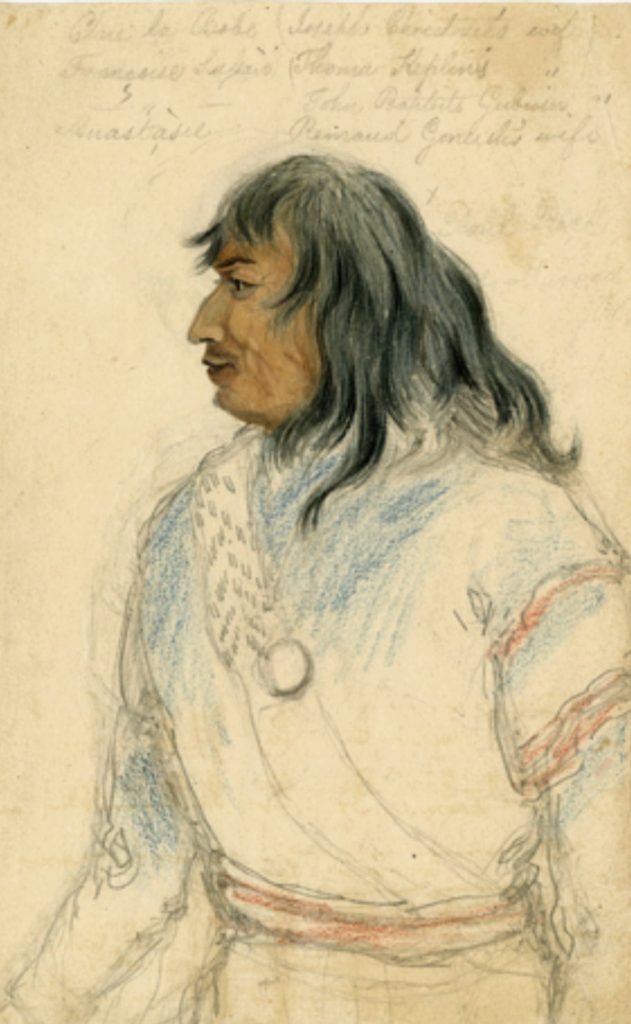Materials required: dictionary, scroll, logbook, projector, whiteboard
Explain to the class that at this time, the Mi’kmaq had very little. So many fur-bearing animals had been hunted in the previous decades that there were very few left for the Mi’kmaq to hunt and sell, and many settlers had already moved along the Miramichi River and chosen the best locations. The Mi’kmaq had already signed treaties saying they would protect and keep peace with the settlers who had moved into the area; they had also given up their ammunition in past treaties, meaning they could barely hunt at all and food was very scarce. They were nearing starvation. After presenting this information, read the following treaty to the class.
This was agreed between the two Kings, the English King George III and the Indian King, John Julian, in the presence of the Governor, William Milan of New Brunswick, and Francis Julian (Governor) the brother of said John Julian, on board His Majesty’s Ship, that henceforth to have no quarrel between them.
And the English King said to the Indian King, Henceforth, you will teach your children to maintain peace, and I give you this paper upon which are written many promises, which will never be effaced.
Then the Indian King, John Julian, with his brother Francis Julian, begged his Majesty (through William Milan), to grant them a portion of land for their own use, and for the future generations. His Majesty granted their request. A distance of six miles was granted from Little South West on both sides, and six miles at North West on both sides of the Rivers.
Then His Majesty promised King John Julian, and his brother Francis Julian, “Henceforth I will provide for you, and for the future generations as long as the Sun rises and the River flows.”
Look up the word effaced. What do you think it means in this treaty?
Divide the class into two parts — one side playing the British, the other side playing the Mi’kmaq. On each side, have the students choose classmates to play the roles of: Governor Milan, Chief John Julian, and Governor Francis Julian. Have the British side prepare the treaty by writing on a large scroll the last line of this treaty starting with “Henceforth…”.
Have the Mi’kmaq members design the space to reflect the deck of the ship. Then position all the people accordingly — all the British stay on the ship and all the Mi’kmaq stay on land except John and Francis Julian. Why would it be set up in this way?

Role play reading the treaty — Governor Milan reading the parts of His Majesty and King (Chief) John Julian and Francis Julian reading the Mi’kmaw parts. Have all three of them sign it.
- Given what you know about the situation, how does the crowd on both sides react?
- Discuss in your two groups and write down your answers:
- What does each side receive as a result of signing this treaty?
- What limitations does each side have? Can they understand each other?
- What does each side not want to give up?
- Is it a fair treaty?
- Do you think both sides would have found it easy to keep their promises?
- Why or why not?
- What does a promise mean in your group?
- Attach each group’s answers to the original Treaty scroll.
Now look at the map of the Tabusintac River. Where is the Indian Reserve on this map? Is it in a good place? How does it limit access to traditional territory? For what seasons? Think about how people travelled with no roads at this time. What difficulties might Mi’kmaq have had if they were going fishing?





